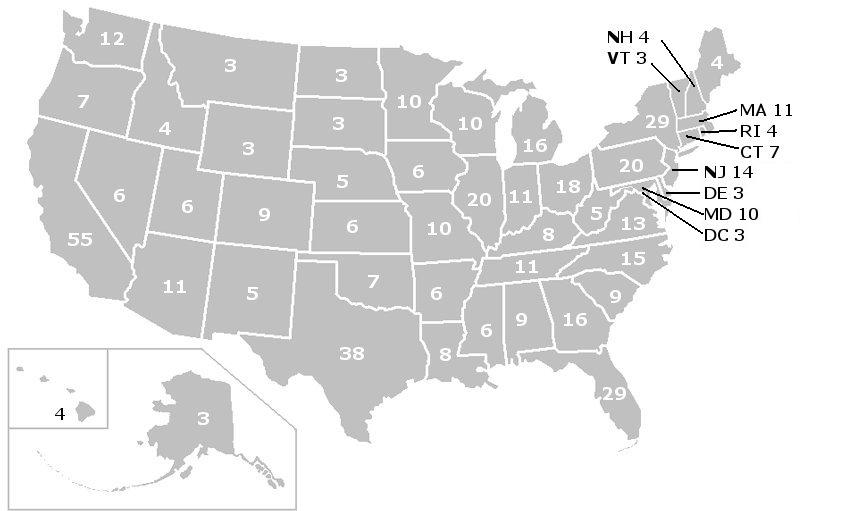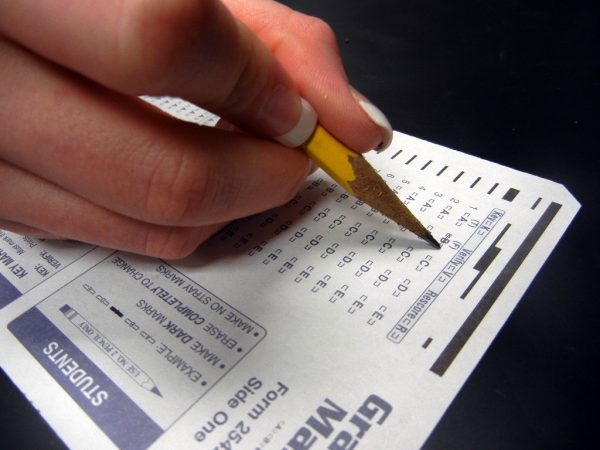I Didn’t Vote For Him, But My State Did
With every election cycle there are several constants, and debate about the Electoral College is one of them. Though the Electoral College has been in place since the founding of America, it has come under fire recently because of its undemocratic qualities. In 2016, the discussion about the Electoral College was renewed due to Donald Trump’s victory and continues to this day.
The Electoral College is the system by which the United States president and vice president are elected. Each state is given a number of votes depending on population, with a minimum of three votes per state. During the elections, people in each state vote for their candidate of choice, those votes go to choosing who the state’s votes will go to, as well as to the national vote counter called the popular vote. To win, a candidate must win with the Electoral College, but winning the popular vote is not required. This means that even if most voters choose one candidate, the one who gets the most votes from the Electoral College wins.
The Electoral College was implemented in order to benefit small states (states with low populations). The purpose was to keep people living in more rural areas from being ignored in favor of places with larger populations. However, this has led to smaller states having a disproportionate amount of power in the system. A vote in Kansas is worth much more than a vote in California. According to Business Insider, Kansas had six Electoral College votes in 2016 while California had fifty-five. California at the time had a population of thirty nine million people and Kansas had a little less than three million people. That means that one Electoral College vote would encompass 480 thousand votes in Kansas, while in California it would take 710 thousand votes to make up one Electoral College vote.
Another issue that can be observed about the Electoral College is its winner-take-all system. According to The New York Times, forty eight states have winner- take-all laws, which means that the candidate who wins the popular vote in that state will have all of its Electoral College votes going to that candidate. There is no way any state is ever going to be one hundred percent one way or the other, in every case there is going to be a select group of people whose vote is going to be ignored. Even if the split is something like ten percent for one side, ninety percent for the other in a state with a population of five million, that still means that five hundred thousand people’s votes are getting ignored.
Criticism of the Electoral College has gained steam recently, but that does not mean that this is a new problem. According to CNN, ten percent of United States presidents lost the popular vote (five presidents) since the founding of the country. These presidents are not remembered as the most favorable by history; in a ranking of all U.S.presidents by Politico, the five presidents who lost the popular vote were almost all in the bottom half. Even our current president, Donald Trump, lost the popular vote to Hillary Clinton.
While the Electoral College does have its flaws, its supporters claim it would be impossible to get rid of it. According to the New York Post, downright eliminating the Electoral College would be a “logistical nightmare,” with every state recount becoming a national recount. The article also claims that criticism of the Electoral College is not based on the system itself, but is instead politically motivated.
It is true that recent political events have caused people to jump onto the bandwagon to eliminate the Electoral College, however, Trump’s 2016 victory did not start the Electoral College debate, only reignited it. According to CNN, in 1969 a new popular vote system was introduced to get rid of the Electoral College and made its way through the House of Representatives before getting shot down by the Senate.
Getting rid of the Electoral College is not the only option. Certain states have begun casting all of their votes to the national popular vote winner. States such as California, New Mexico, Illinois and New York formed the National Popular Vote Interstate Compact. According to nationalpopularvote.com, sixteen states have joined the coalition accumulating 196 Electoral College votes. A candidate needs 270 votes to win, so the coalition is still too small to decide an election. However, seeing as the only way to properly get rid of the Electoral College is with a constitutional amendment, which is unlikely to be passed and would inevitably result in heated debate, a compact between the states is likely the most effective alternative.
While the Electoral College was originally designed to give everyone a voice, its impact is the exact opposite. In order to truly live up to America’s democratic ideals, it must be abolished, whether through amendment or through a coalition of the states.






